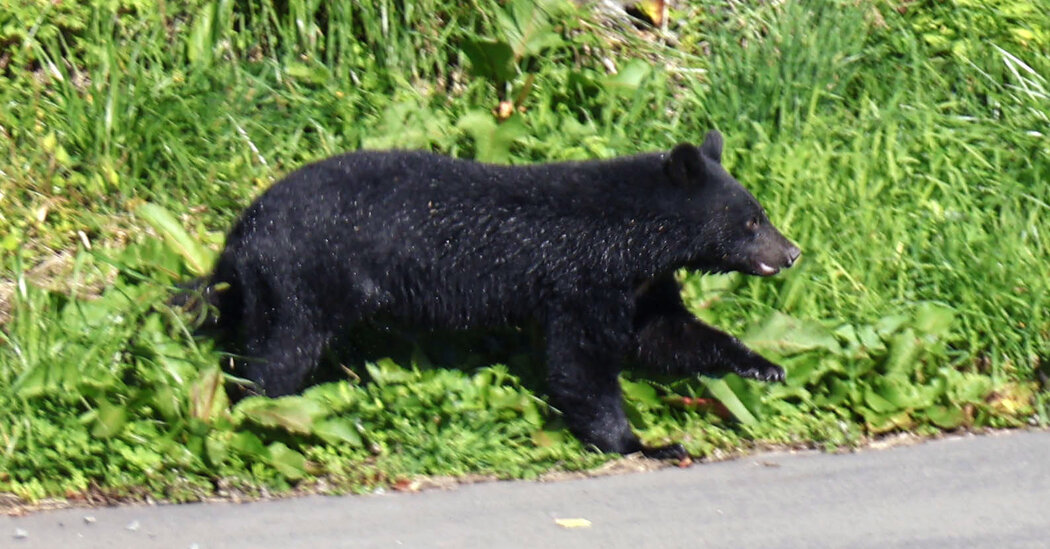The horror stories are everywhere in Japan this fall. Bears breaking into supermarkets. Bears killing farmers. Bears attacking workers at a hot springs resort.
More than 100 people have been injured by bears in Japan this year, and 11 have died, a record. Now the government is preparing to dispatch the military to one hard-hit area to help deal with the problem.
Troops will be sent to Akita Prefecture, in the mountains of northern Japan, the Ministry of Defense said on Tuesday, to help set traps and dispose of the carcasses of dead bears. The troops, who were requested by officials in Akita, are not expected to kill any bears; that task will be left to local hunters.
“Bears have been appearing in supermarkets, and there’s a possibility that a bear may be in front of your house when you wake up in the morning,” Shinjiro Koizumi, Japan’s defense minister, said at a news conference on Tuesday in Tokyo. “People are living in great fear.”
Experts say the surge in attacks is partly the result of climate change, which has led to a scarcity of foods like beechnuts, a favorite snack for bears, in some areas. Japan’s population decline has also contributed to the problem, with bears venturing into rural areas that were once full of people.
The population of bears — including the Asiatic black bear and the brown bear — appears to be increasing, and many are wandering into residential areas, including the outskirts of Tokyo. Bear attacks often surge in October and November before the animals hibernate.
In recent weeks, there have been reports of bears breaking down school doors, running across train tracks and attacking a tourist at a bus stop. Iwate University, in northern Japan, recently canceled classes for two days after a bear was spotted on campus.
In Akita, home to about 880,000 people, the problem has been particularly acute. More than 50 people have been injured in bear attacks in the prefecture this year, and two have died, including a 73-year-old woman who was attacked while taking out the trash, and a 38-year-old man who was killed near a village office.
As recently as Sunday, an 85-year-old farmer who lives in Kazuno city in Akita reported that she had been attacked from behind while washing radishes.
The governor of Akita, Kenta Suzuki, visited Tokyo this week to seek help from Japan’s military, called the Self-Defense Forces. He said that the prefecture had been laying box traps and promoting the use of bear repellent spray. Hunters are working in the area, but they are exhausted, he said.
Mr. Suzuki wrote on social media that “the situation is no longer something the prefecture and municipalities can handle alone.”
“We understand that this will continue to be a source of anxiety for the residents of the prefecture, and we ask for your continued caution,” Mr. Suzuki wrote on Instagram.
Japan has tried to train more hunters in recent years to help control the population of bears, but the hunters are aging and their ranks have thinned.
Japan has called on its military in the past to help deal with animals, including the surging population of Ezo deer in Hokkaido, the northernmost of Japan’s main islands. Mr. Koizumi noted at the news conference that the law allows the military to transport dead animals, but it does not appear to permit extermination. He added that Akita Prefecture had not requested help in hunting the bears.
Mr. Koizumi said the Ministry of Defense would first dispatch a group of army officers to Akita to develop a plan to address the surge in bear attacks, before later setting up the box traps. A typical trap has food inside to attract the bears and an entrance that closes behind them to cage them in. Hunters are then typically called in for extermination.
Mr. Koizumi said it was important that the work not interfere with other military missions.
“We must not allow excessive burdens to be placed on the Self-Defense Forces,” he said. “On the other hand, it is also obviously wrong to sit idly by and watch as the lives and livelihoods of the people and citizens of the prefecture are threatened.”
Javier C. Hernández is the Tokyo bureau chief for The Times, leading coverage of Japan and the region. He has reported from Asia for much of the past decade, previously serving as China correspondent in Beijing.
Kiuko Notoya is a Tokyo-based reporter and researcher for The Times, covering news and features from Japan.
The post Japan to Send Troops to Help Stop Bear Attacks appeared first on New York Times.




